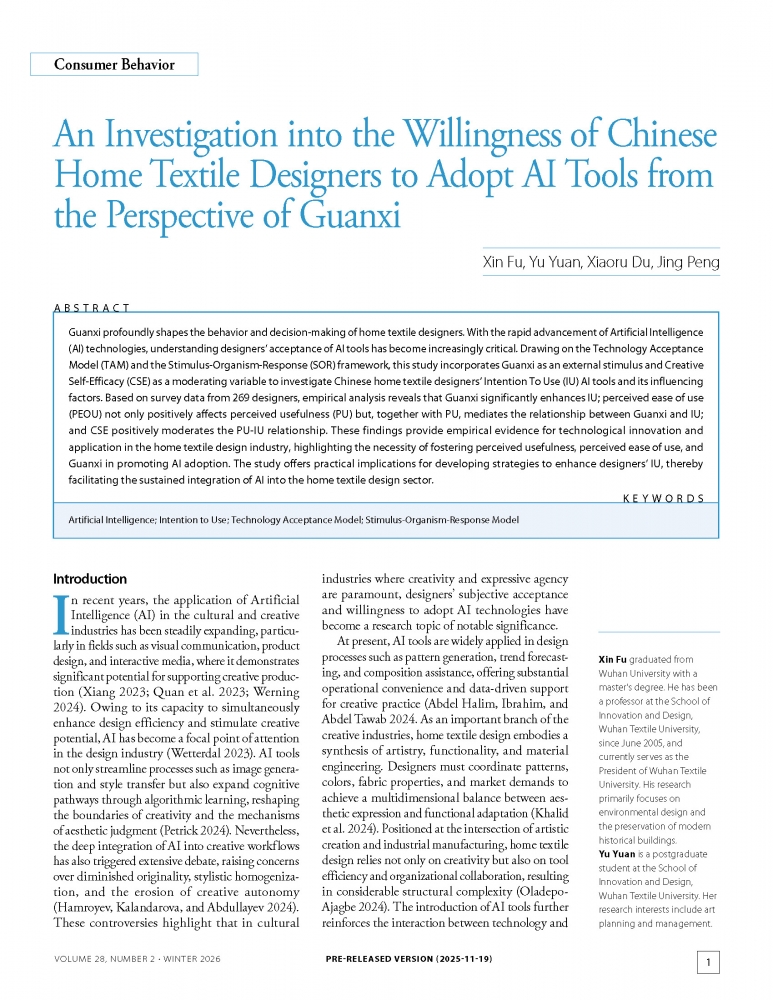An Investigation into the Willingness of Chinese Home Textile Designers to Adopt AI Tools from the Perspective of Guanxi
Product: Article
$21.00 CA
[PRE-RELEASED VERSION]
Xin Fu, Yu Yuan, Xiaoru Du, Jing Peng
Xin Fu graduated from Wuhan University with a master’s degree. He has been a professor at the School of Innovation and Design, Wuhan Textile University, since June 2005, and currently serves as the President of Wuhan Textile University. His research primarily focuses on environmental design and the preservation of modern historical buildings.
Yu Yuan is a postgraduate student at the School of Innovation and Design, Wuhan Textile University. Her research interests include art planning and management.
Xiaoru Du is an Associate Professor at the School of Innovation and Design, Wuhan Textile University. She earned her PhD in Art Management from the School of Art and Design, Wuhan University of Technology. Her research focuses on consumer behavior in the arts and human resource management in creative industries.
Jing Peng is a lecturer at the School of Innovation and Design, Wuhan Textile University. She received her PhD in Engineering in 2023 from Wuhan University, where she majored in Urban and Rural Planning. Her research interests include historical heritage preservation and environmental art design.
ABSTRACT
Guanxi profoundly shapes the behavior and decision-making of home textile designers. With the rapid advancement of Artificial Intelligence (AI) technologies, understanding designers’ acceptance of AI tools has become increasingly critical. Drawing on the Technology Acceptance Model (TAM) and the Stimulus-Organism-Response (SOR) framework, this study incorporates Guanxi as an external stimulus and Creative Self-Efficacy (CSE) as a moderating variable to investigate Chinese home textile designers’ Intention To Use (IU) AI tools and its influencing factors. Based on survey data from 269 designers, empirical analysis reveals that Guanxi significantly enhances IU; perceived ease of use (PEOU) not only positively affects perceived usefulness (PU) but, together with PU, mediates the relationship between Guanxi and IU; and CSE positively moderates the PU-IU relationship. These findings provide empirical evidence for technological innovation and application in the home textile design industry, highlighting the necessity of fostering perceived usefulness, perceived ease of use, and Guanxi in promoting AI adoption. The study offers practical implications for developing strategies to enhance designers’ IU, thereby facilitating the sustained integration of AI into the home textile design sector.
KEYWORDS
Artificial Intelligence; Intention to Use; Technology Acceptance Model; Stimulus-Organism-Response Model
